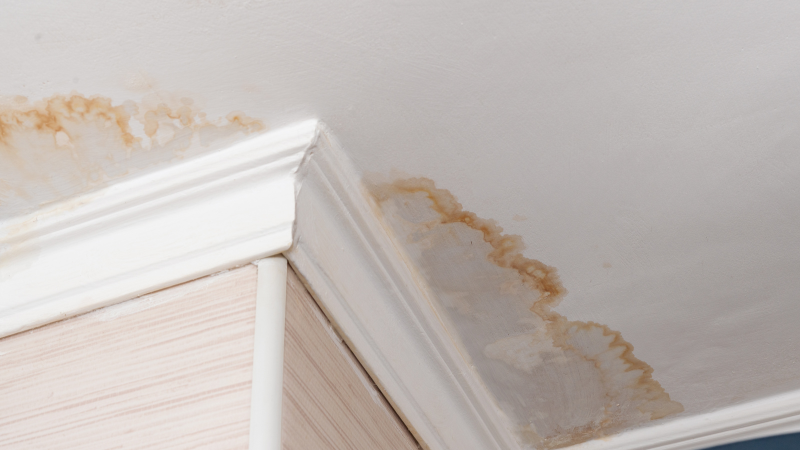How to avoid a Water Damaged Bathroom
How to avoid a Water Damaged Bathroom
Blog Article
Every person has their private way of thinking in relation to Common Causes of Water Damage in a Bathroom.

The restroom is exceptionally susceptible for wet build-up and also prospective water damages because of the constant use of water in it. This post offers basic examination methods to aid detecting water damages hazards.
The regular use of water in the shower room makes it extremely prone for moist build-up and also prospective water damages. By inspecting it frequently, you can reduce water associated problems.
The following set of examinations is easy to carry out as well as need to be done once in every three months in order to maintain your bathroom in good shape as well as to stop potential water problems brought on by the bathtub, the shower, pipe joints as well as plumbing, sinks, closets, and also the toilet
Do not overlook doing these assessments and be comprehensive while doing them. Remember that these simple evaluations can save you a great deal of cash by providing early indicators for water damage
Bath tub and also Shower
The shower and tub need unique interest as well as upkeep. Inspect the floor tiles and also replace if broken. Make certain that there is no missing out on cement in between the floor tiles. Inspect and replace broken caulking at joints where the walls satisfy the floor or the tub. Clogged drains and pipes troubles will certainly stop the tub from drying out as well as may indicate serious troubles underneath the tub. Talk to an expert instantly to avoid architectural damages. Focus on discolorations or soft areas around the tub walls as they may suggest an interior leakage.
Plumbing
Signs for water damage are difficult to spot because most pipes are installed inside the walls.
Pay unique focus to floor covering and also wall surfaces wetness as well as spots as they may indicate an invisible plumbing problem. Examine wetness levels in adjoining areas too.
Sinks and also Cabinets
Sinks as well as cabinets are revealed to wetness and humidity day-to-day as well as are typically neglected. Inspect routinely under the sink and on the kitchen counter over it. Repair any drip in the catch as it may suggest drainpipe problems. Look around the sink, slow-moving draining pipelines may show a blocked drain. Change sink seals if they are split or loose.
The Toilet
The commode is a prone water junction. Check the water lines and also search for leakages around the bathroom seat, in the hose, and also under the water storage tank. If you detect any kind of indications of moisture on the flooring around the bathroom, look for leakages in the toilet rim and also storage tank seals.
Realize that hanging bathroom bowl antiperspirants enhances the opportunities for blockages.
TIPS TO PREVENT WATER DAMAGE IN THE BATHROOM
The average household uses approximately 80-100 gallons of water per person per day. For a family of 4, that's almost 2,500 gallons of water a week! The largest portion of this consumption comes from bathroom use. Flushing the toilet uses the most water, followed by taking a shower or bath. With that much water running through the home, water damage in the bathroom is bound to happen. Knowing how to spot signs of a water leak is essential to preventing long-term damage. This guide provides you with tips to reduce the impact of water damage on your bathroom.
CAUSES OF BATHROOM WATER DAMAGE
Pipe breaks are the most common cause of water damage we see in our daily jobs. The age of a pipe plays a large role in a pipe break as well as corrosion. Over time, the metal begins to break down, allowing water to escape. Frozen pipe breaks are also a concern in the winter months. Toilet overflows caused by paper products or children flushing inappropriate items. Degraded caulking around the toilet or bathtub can allow water seepage, sometimes behind the fixture, into the subfloor or walls. Condensation forms when the water in a pipe is cooler than the air temperature. Beads of water form on the exterior of the pipes, sometimes so much so that the water begins to drip and pool below. Sink or shower backups created by poor drainage. HOW TO PREVENT WATER DAMAGE IN YOUR BATHROOM
Inspect your toilet supply line for worn or frayed hoses and replace them as needed. Winterize your plumbing to prevent a frozen pipe break. Use vent fans to prevent condensation that can lead to mold growth. Routinely check and replace degraded caulking around your toilet or bathtub. Increase the temperature in your toilet tank and insulate your pipes during the warm summer months to keep condensation from forming. Use child safety locks on the toilets. Flush only toilet paper. "Flushable" wet wipes are actually not good for your plumbing system. Additionally, feminine hygiene products should not be flushed. Prevent water from escaping the tub or shower. Make sure shower curtains are in good condition. Inspect shower doors and replace the seal strip if necessary. Wipe up any water that accumulates on the floor and use bath mats. Water left to sit can cause damage to the tiles and flooring. Refrain from using bath products containing heavy oils to avoid a clogged drain.

As a devoted person who reads about How to Repair and Prevent Bathroom Water Damage, I thought sharing that piece of content was appropriate. If you liked our blog entry if you please make sure you remember to share it. I recognize the value of reading our article about How to Fix a Water Damage Bathroom.
Book A Service Report this page